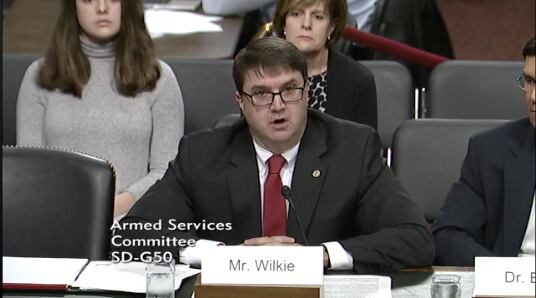WASHINGTON — A pair of defense analysts have a new solution for fixing military personnel and readiness issues: Get rid of the Pentagon’s Personnel and Readiness office.
Calling the current office “outmoded and ineffective” in a piece for the War on the Rocks website, American Enterprise Institute national security fellow Mackenzie Eaglen and Center for Strategic and International Studies Defense Budget Analysis director Todd Harrison argue that shuttering it would streamline military bureaucracy and produce other benefits.
“Doing so would not only improve the quality of life for servicemembers by rationalizing the personnel system, but would also enable the Pentagon to more easily diagnose and treat the readiness problems plaguing the force,” they wrote.
“P&R has faced consistent criticism, not just for failing to devise innovative reforms for military compensation, career trajectory, and readiness metrics, but also for actively stifling such proposals.”
Their piece came a day after President Donald Trump’s nominee to take over the office — Robert Wilkie — testified before the Senate Armed Services Committee on the importance of the role.
He said the Defense Department needs to better adjust its operations to mirror the modern civilian work force, with more flexible recruiting and retention incentives. He also said Pentagon personnel policies are “hamstrung” by rules put into place decades ago.
RELATED

If confirmed, Wilkie will be the twelfth acting or permanent under secretary overseeing personnel and readiness issues in the last eight years. The analysts blamed that turnover for fostering a “lack of creativity and initiative” within the office.
“Given its ongoing state of dysfunction … the Trump administration should divide up P&R’s responsibilities among the military services,” they wrote. “Just as the combatant command structure was simplified — albeit not reduced — by the elimination of the redundant Joint Forces Command, so too could the dissolution of P&R streamline the Pentagon’s civilian organization.”
They argue that most of the major military personnel moves of recent years have come from other areas of government. The repeal of “don’t ask, don’t tell” and the overhaul of the military retirement system, for example, both came at Congress’ urging, not military personnel officials.
And they also argue that as it operates now, the office offers little insight into military readiness problems.
“By aggregating the readiness reports provided by the services with few alterations, P&R injects little value or oversight into these vital issues,” they wrote. “As a result, the definitions of readiness are vague and not standardized across the Pentagon.”
Trump has repeatedly stated his goal of cutting back on federal bureaucracy, and mandated funding and personnel cuts across numerous government agencies.
Leo covers Congress, Veterans Affairs and the White House for Military Times. He has covered Washington, D.C. since 2004, focusing on military personnel and veterans policies. His work has earned numerous honors, including a 2009 Polk award, a 2010 National Headliner Award, the IAVA Leadership in Journalism award and the VFW News Media award.





